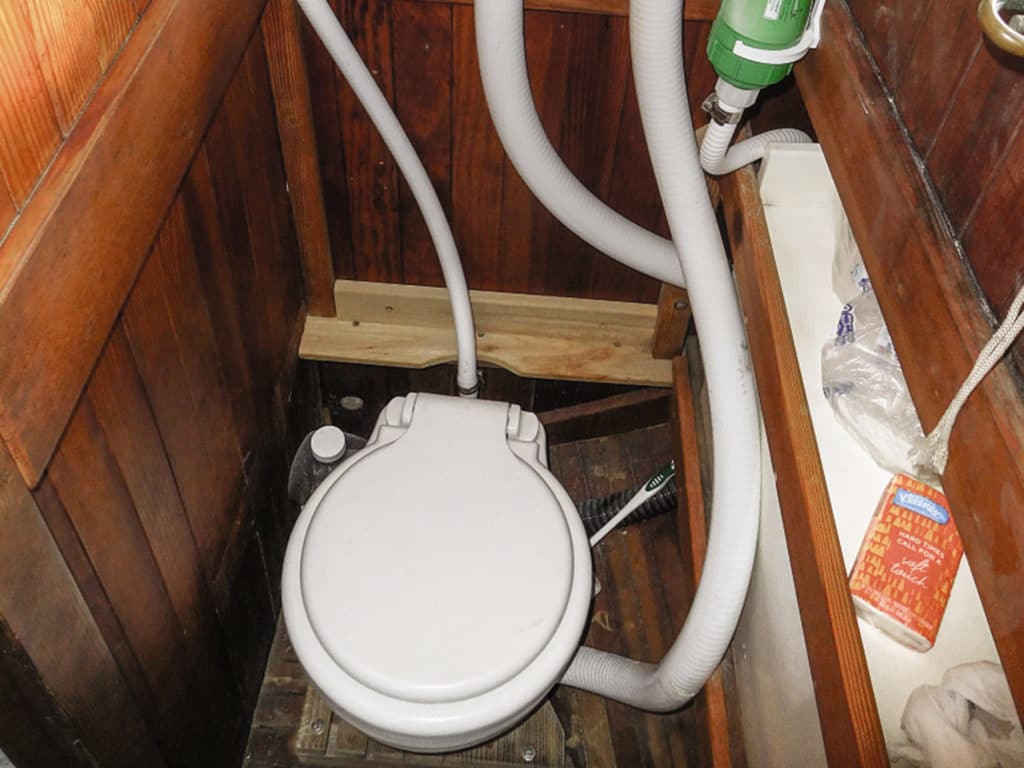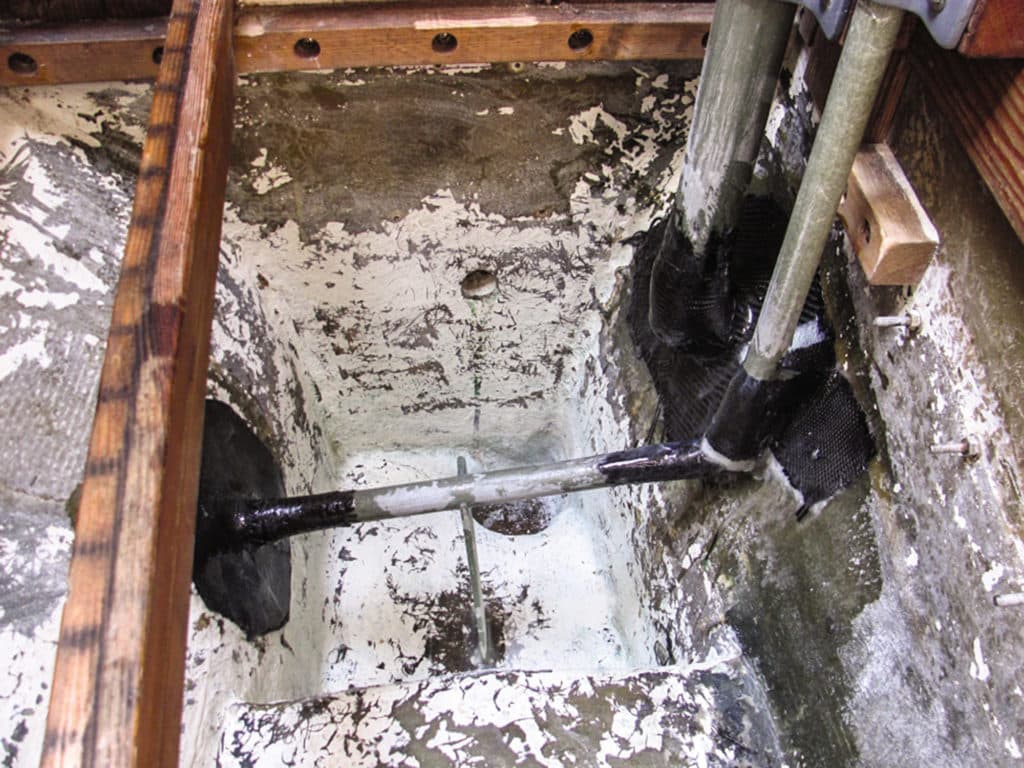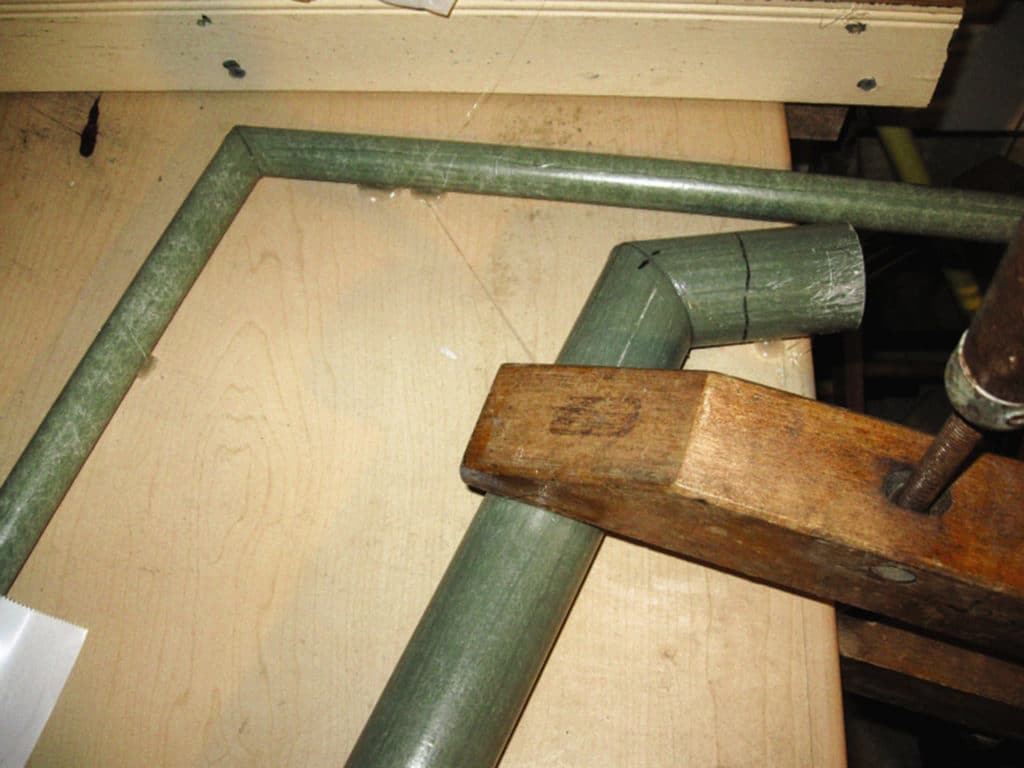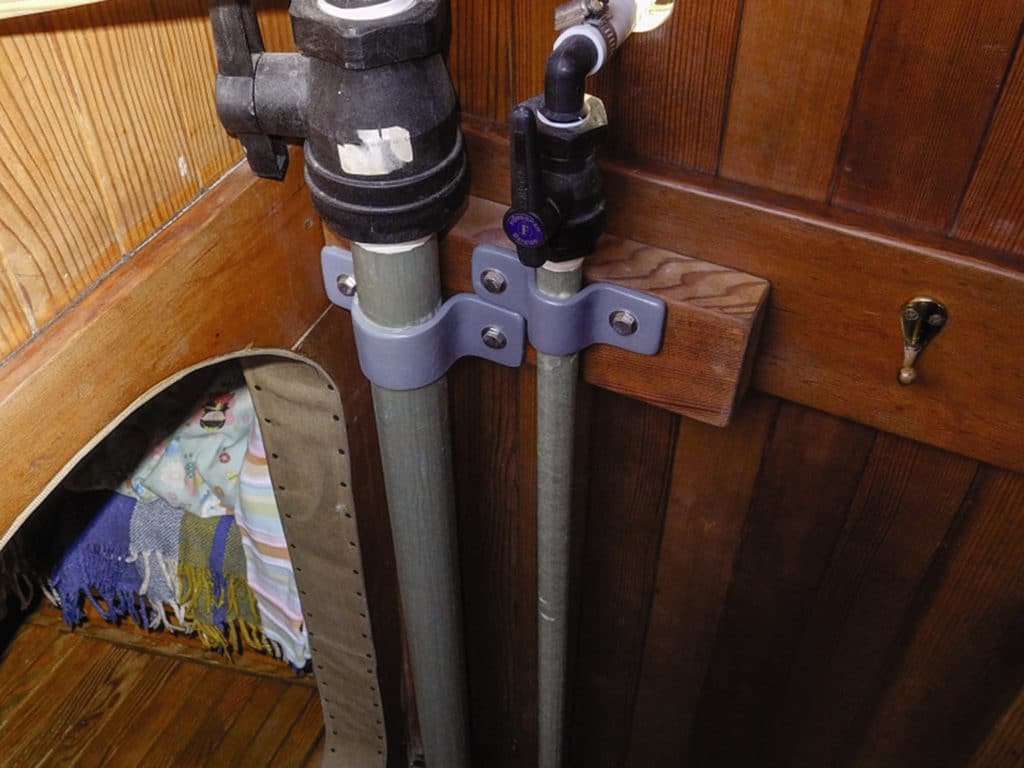
It has been our pattern ever since we began cruising on Ganymede, a home-finished Cape George 31 cutter, to take the already simple systems we began with and simplify them further. And so, the motorcycle battery first used to start the outboard got chucked in favor of pulling the cord; the fuel now lives in a 5-gallon Mexican fabric-softener jug with a hole cut in it for a hose (it actually leaks and smells less than the OEM tank); the hand pump for lamp oil is in a junk heap in a Colombian boatyard. The list goes on: Suffice it to say that nearly everything is simpler and has fewer moving parts than when we began. Only one boat system, in fact, has become more complicated, and that was by necessity.
For the first several years of our cruise, when we were exploring Central and South America, in some of the places we explored, our sanitation strategy—the tried-and-true rubber bucket—was positively space-age. And in locales with more-modern conveniences, the strict injunction to use designated pump-out stations was made ironic by the complete absence of such facilities. I look forward to the day when every harbor has a pump-out facility, and coastal cities no longer dump sewage straight into the water. But these are the times we live in, and that was the situation in the spots where we cruised.
Returning to the United States, however, presented a new challenge. Here there are designated pump-out facilities, and the dutiful sailor will want to avail himself of them, for the good of everyone. And so, seeing we were going to cruise in home waters for some time, I installed a holding tank and a porcelain toilet. There being nowhere else to put it, the holding tank went in the tiny head cubicle, in the place where we used to hang foul-weather gear and stash the laundry basket. The biggest advantage of having it there is that there’s a very short run of hose from the head to the tank—the plumbing doesn’t pass under people’s bunks or through any bulkheads and is 100 percent accessible. Another advantage is that the 20-gallon tank takes up so much room that on really rough nights, there’s no chance of falling off the toilet because you’re wedged in pretty tight. It might not be comfortable, but who goes to sea for that anyway?

I have always wanted a Wilcox-Crittenden “Skipper” head, the one with a cast-bronze body and oh-so-elegant pump handle. Sadly, they’re no longer made, and if they were, there simply wouldn’t have been room on our boat. My No. 2 choice was the Lavac, largely because it seems the simplest, most trouble-free marine head out there. Also, being able to mount the pump separately from the toilet was necessary due to the space restrictions I’ve already mentioned. I mounted the pump on the bulkhead above, which was perfect for the children, who could stand on the closed lid of the head and pull on the handle to their hearts’ content.
Now, however much space a 20-gallon holding tank uses up, it’s not really all that big when five people are contributing, and we had to find a pump-out station pretty frequently. Also, since the system was closed—there were as yet no through-hulls at all in Ganymede—the only way we could self-empty the holding tank was to adapt a spare hand pump to the deck fitting, drop a hose over the side, and pump overboard that way. Definitely not for the faint of heart, and too acrobatic to do out at sea in any kind of weather. Clearly more plumbing was needed.
I had avoided putting any through-hulls at all in Ganymede when I built her, for the simple reason that I dislike and distrust them. However well-made and well-installed, there’s no denying that they make for a weak link below the waterline, and hose connections with clamps are a common point of failure and raise the potential for sinking. But there was no denying that some sort of outlet would be needed if we wanted to cruise offshore or in foreign lands again, and a water inlet would be nice as well: So far we had been pouring water into the bowl in order to flush.
Still, I couldn’t bring myself to use regular bronze through-hulls and seacocks. I mean, a sailor has to sleep at night! Instead, I ordered some lengths of thick-walled fiberglass pipe from McMaster-Carr. Then with the boat on the hard, I cut a hole for the larger-diameter pipe on one side of the bilge sump, and a smaller hole on the other side. Now the inlet and outlet sides would be separated by the entire full keel of the boat; there was no chance of sucking back in something that had just been pumped out.

Since fiberglass tube isn’t flexible, I took some careful measurements with T-bevels to ensure that the pipe joints would go where I wanted them, then cut the pipes and glued the joints back together with thickened epoxy glue. I was careful to make the outlet pipe have the straightest run, without unnecessary twists and turns. The inlet pipe crossed over from the opposite side of the bilge before turning up to parallel the other one.
It took some careful dry-fitting and fine-tuning before I was comfortable with the setup, but once it all looked good, I put the large pipe in place and held it there with some fiberglass pipe straps I’d made using the pipe itself as a mold. And just for good measure, I squeezed some glue onto the straps so they’d never come off the pipe. Then, making sure the pipe and the hole in Ganymede were thickly coated in thickened epoxy as well, I tabbed the pipe firmly to the inside of the hull with some scraps of biaxial carbon fiber.
It didn’t take long, and before the first phase was cured, I fit and tabbed the inlet pipe in a similar fashion. Because it spans a large distance inside the bilge sump, I glued a support strut halfway along, just in case someone were to drop something really heavy down there, though that would require some serious acrobatics.
On the outside, all I had to do once the glue dried was sand the protruding pipes flush with the hull and make sure I got antifouling up inside as far as the brush could reach.
Ganymede’s bilge sump, though easily accessible for cleaning and inspection, has never been pretty. It just wasn’t on my list of things to beautify during the construction. But now that there had been so much grinding in there anyway, it seemed a shame not to tidy it up a little. And so I sanded—with 80-grit by hand wherever a machine couldn’t reach—then primed and applied gray Bilgekote. It still isn’t pretty, I’ll admit, but it’s all a uniform color, and it’s got less dirt-trapping hollows. It’ll have to do.

At the upper end of the pipes I had installed Marelon ball valves—something I might not have been comfortable with if they were beneath the waterline. But as it is, they’re a couple of feet above it, which means I can take them off, with the boat in the water if necessary, to service or change them. I could probably have done without them entirely, but I wanted an easy means of sealing the pipes in case the siphon breaks failed. You never can be too careful with plumbing.
As with everything on a small boat, it took some careful arranging to get all the hoses, valves, siphon breaks and other fittings to fit peaceably together. Since Ganymede hadn’t been designed with all that plumbing in mind, there was nowhere to hide it out of sight—it’s all just out in the open, looking more as though it grew there, vine-like, than was placed on purpose. The advantage of that, though, is that the Y-valve can be operated and the filter changed without grubbing about in a dark cupboard, and all maintenance is easily done without the usual contortions.
Well, there it is: The one boat system on Ganymede that has become more complex rather than simpler. And while I grudge the expense and the space that it all takes up, I must admit that a porcelain toilet is far more classy and convenient than the old rubber bucket. So no, I don’t regret it—I just hope the rest of the world catches up and installs pump-out stations soon.
Boatbuilder and writer Ben Zartman is a frequent contributor to CW








